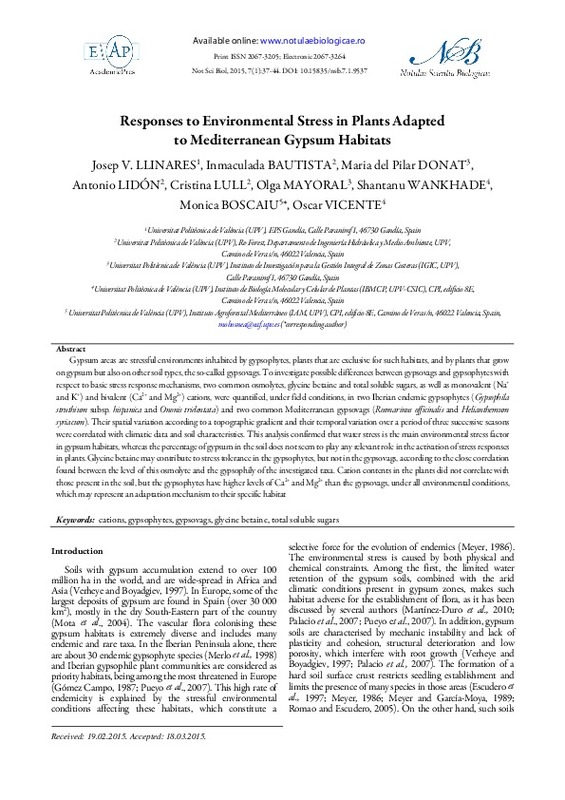|
Resumen:
|
[EN] Gypsum areas are stressful environments inhabited by gypsophytes, plants that are exclusive for such habitats, and by plants that grow on gypsum but also on other soil types, the so-called gypsovags. To investigate ...[+]
[EN] Gypsum areas are stressful environments inhabited by gypsophytes, plants that are exclusive for such habitats, and by plants that grow on gypsum but also on other soil types, the so-called gypsovags. To investigate possible differences between gypsovags and gypsophytes with respect to basic stress response mechanisms, two common osmolytes, glycine betaine and total soluble sugars, as well as monovalent (Na+ and K+) and bivalent (Ca2+ and Mg2+) cations, were quantified, under field conditions, in two Iberian endemic gypsophytes (Gypsophila struthium subsp. hispanica and Ononis tridentata) and two common Mediterranean gypsovags (Rosmarinus officinalis and Helianthemum syriacum). Their spatial variation according to a topographic gradient and their temporal variation over a period of three successive seasons were correlated with climatic data and soil characteristics. This analysis confirmed that water stress is the main environmental stress factor in gypsum habitats, whereas the percentage of gypsum in the soil does not seem to play any relevant role in the activation of stress responses in plants. Glycine betaine may contribute to stress tolerance in the gypsophytes, but not in the gypsovags, according to the close correlation found between the level of this osmolyte and the gypsophily of the investigated taxa. Cation contents in the plants did not correlate with those present in the soil, but the gypsophytes have higher levels of Ca2+ and Mg2+ than the gypsovags, under all environmental conditions,
which may represent an adaptation mechanism to their specific habitat,
[-]
|









